Conference venue
The venue of IMWS-AMP 2017 are in the historical halls “Aula del '400” and “Aula di Disegno”, which are located in the main building of the University of Pavia, Strada Nuova 65, Pavia, Italy. The University of Pavia is one of the oldest universities in Europe. An edict issued by King Lotharius quotes a higher education institution in Pavia as already established in 825. Enlarged and renovated by the Duke of Milan, Gian Galeazzo Visconti, it was officially established as a Studium Generale by Emperor Charles IV in 1361. Alessandro Volta, Girolamo Cardano, and Camillo Golgi are some of the most famous professors who taught at the University of Pavia. Pavia is located in northern Italy, easy to reach from Milan airports and close to destinations like Venice and Florence.
Brief history of the venue
Celts and populations from Liguria most likely settled in the area of the confluence between the rivers Ticino and Po in the 3rd century B.C., but the Roman foundation is dated 41 B.C. and today the street paths of the city centre clearly exhibit the ancient Roman schema. The importance of Pavia rapidly increased because of its strategic position and it finally also became Diocese with its first Bishop S. Siro (his body is now in the Cathedral of Pavia) in the 4th century A.C. For these reasons, even after the end of the Roman empire, Pavia still had a prominent role during the barbarian age. In particular, for around two centuries (568–774) Pavia was the capital of the territories ruled by Longobardi and in this period some of the most ancient churches were erected, most notable the church of S. Michele, a unique masterpiece realized in sandstone that for many centuries was used to crown the Kings ruling over the North of Italy, and the church of S. Pietro in Ciel d’Oro, where the body of S. Agostino is preserved within an impressive Gothic funeral ark manufactured in the 14th century. After this period, the city maintained its importance also under the control of the Holy Roman Empire, and in 825 Pavia obtained from the Emperor Lotario the Scuola Papiensis, marking a fundamental step toward the establishment of a centre for higher education. Then, during the Middle Age, Pavia expanded its influence and it was the principal rival of Milan for the control of the territory. Many churches and palaces were built during this phase and several are still visible today, giving a superb Romanic flavour to the entire city. This golden age of Pavia ended in 1360 when, after a long series of wars with Milan, the city lost its independency and became part of the Duchy of Milan. However, this came with an important benefit because in 1361 Pavia finally obtained the Studium Generale. With this event the city had its University, which can consequently be considered one of the oldest in Europe, and for around one hundred and fifty years it provided a fundamental push for the economic and social growth of Pavia. In 1525 the Battle of Pavia marked the beginning of a new difficult era for the North of Italy under the Spanish and Austrian occupation. Also the University suffered the several limitations of this period until it went under major renovation works in the 18th under the auspices of the Austrian Emperors Maria Teresa and Giuseppe the Second. Many historical buildings of the University were erected during that time and several eminent scholars have had their chair in those years, among the others Ugo Foscolo, Antonio Scarpa, Lazzaro Spallanzani and Alessandro Volta. In the first decades of the 19th century, the strategic position of Pavia, very close to the border between the Austrian dominions and the territories ruled by the Savoia royal family, and the fervent academic environment provided by the University, made the city one of the most important centres during the years known as Risorgimento, which finally led to the Italian nation. Since then the University of Pavia maintained its prominent role in all fields, from Law and Economics to Medicine, Science and Engineering. Several Nobel laureates have lectured in Pavia, for example Giulio Natta, Camillo Golgi and Carlo Rubbia, but today the real strength of the University of Pavia is its incredible integration with the city, demonstrated by fifteen colleges and residences for students (some of them founded in the 16th century by two different Popes), several academic facilities spread all over the city and a fast-growing scientific campus. This makes Pavia and its University, which counts more than 20.000 students and around 1.000 professors, among the five best places in Italy for students and academic scholars since many years, according to the most credited national statistics.
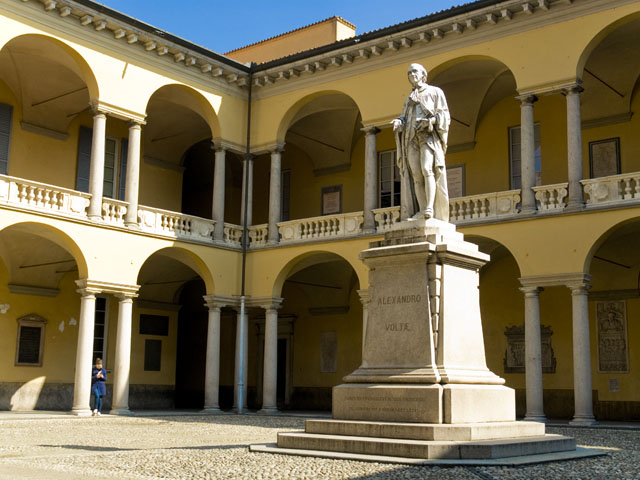 |
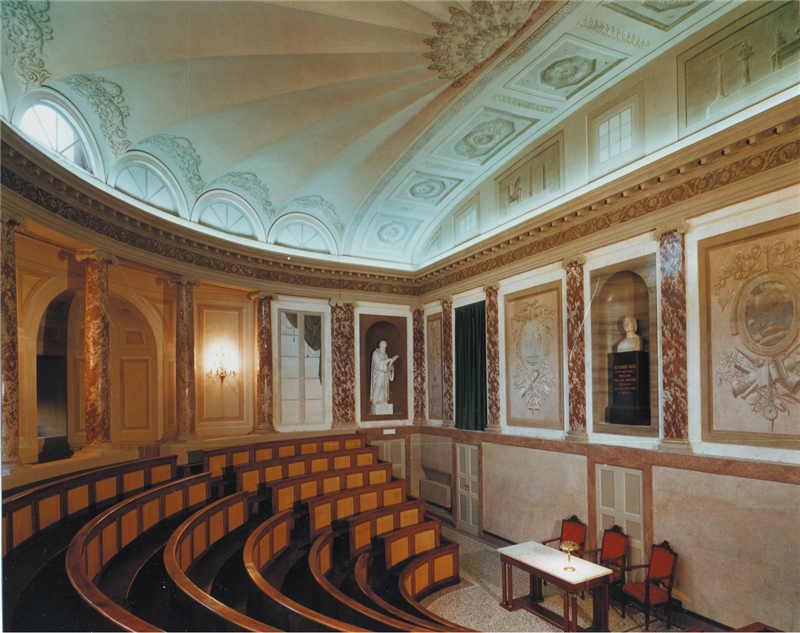 |
The Volta court is dedicated to Alessandro Volta, professor of physics at University of Pavia from 1778 to 1799. He is represented with typical professors clothes and with Volta's battery in the left hand.
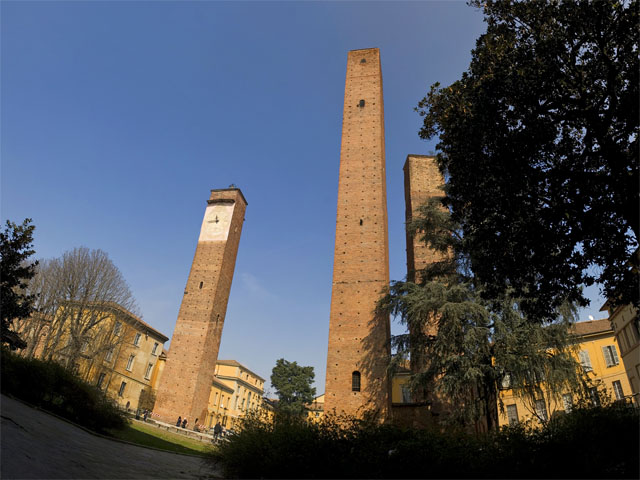 |
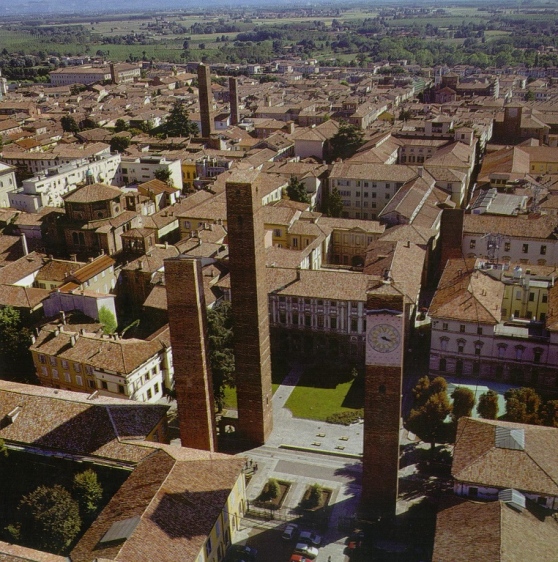 |
Pavia, the city of the “hundred towers”, built by local nobel families to symbolize their power. In actual fact, there were 78 towers: 35 of which are still standing, there are still some remains of 16 and the other 29 are merely memories from documents. The towers that almost certainly stood over the city’s rooftops and for which Pavia is famous, were destroyed. The most important ruins are undoubtedly the three towers in the Leonardo da Vinci square, with the Torre del Maino measuring 51 metres high. The towers in the ex convent San Tommaso in piazza del Lino are also noteworthy; as is the Torre Belcreda the tower of San Dalmazio in via Luigi Porta; along with Torre Lacchini in piazza Borromeo. They are the seven highest towers remaining standing.
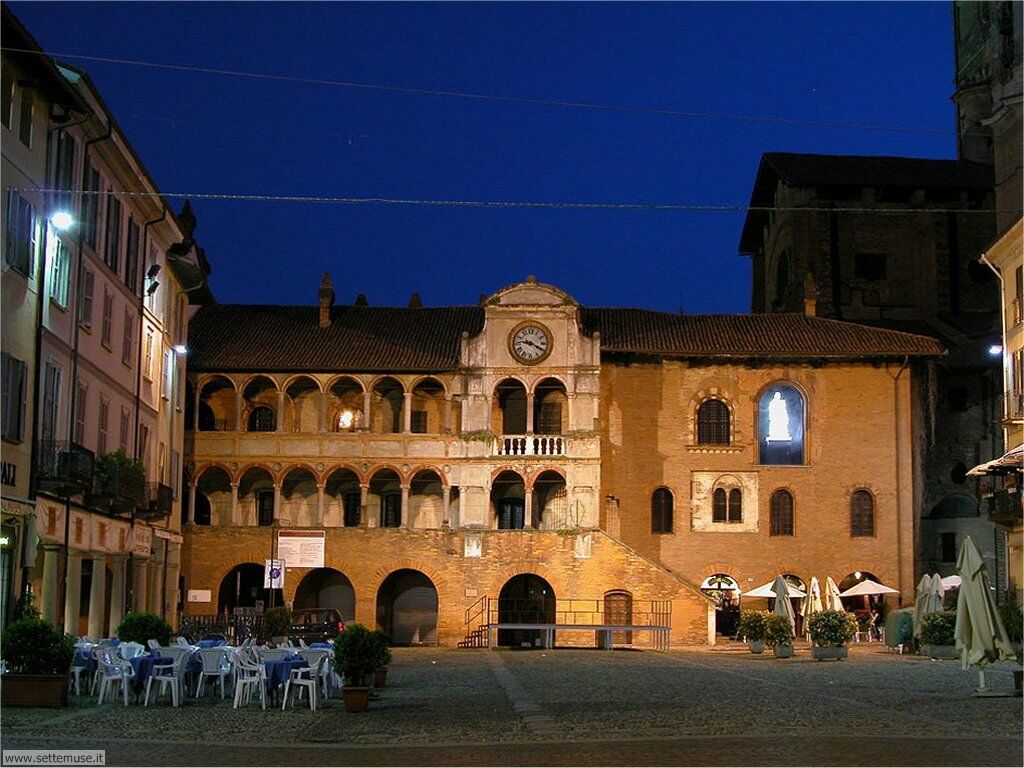 |
The Broletto Palace, Victory Square - Pavia, is a XII century building and the actual venue of the IUSS (Institute for Advanced Studies of Pavia).
The Minerva Statue, Minerva Square - Pavia.
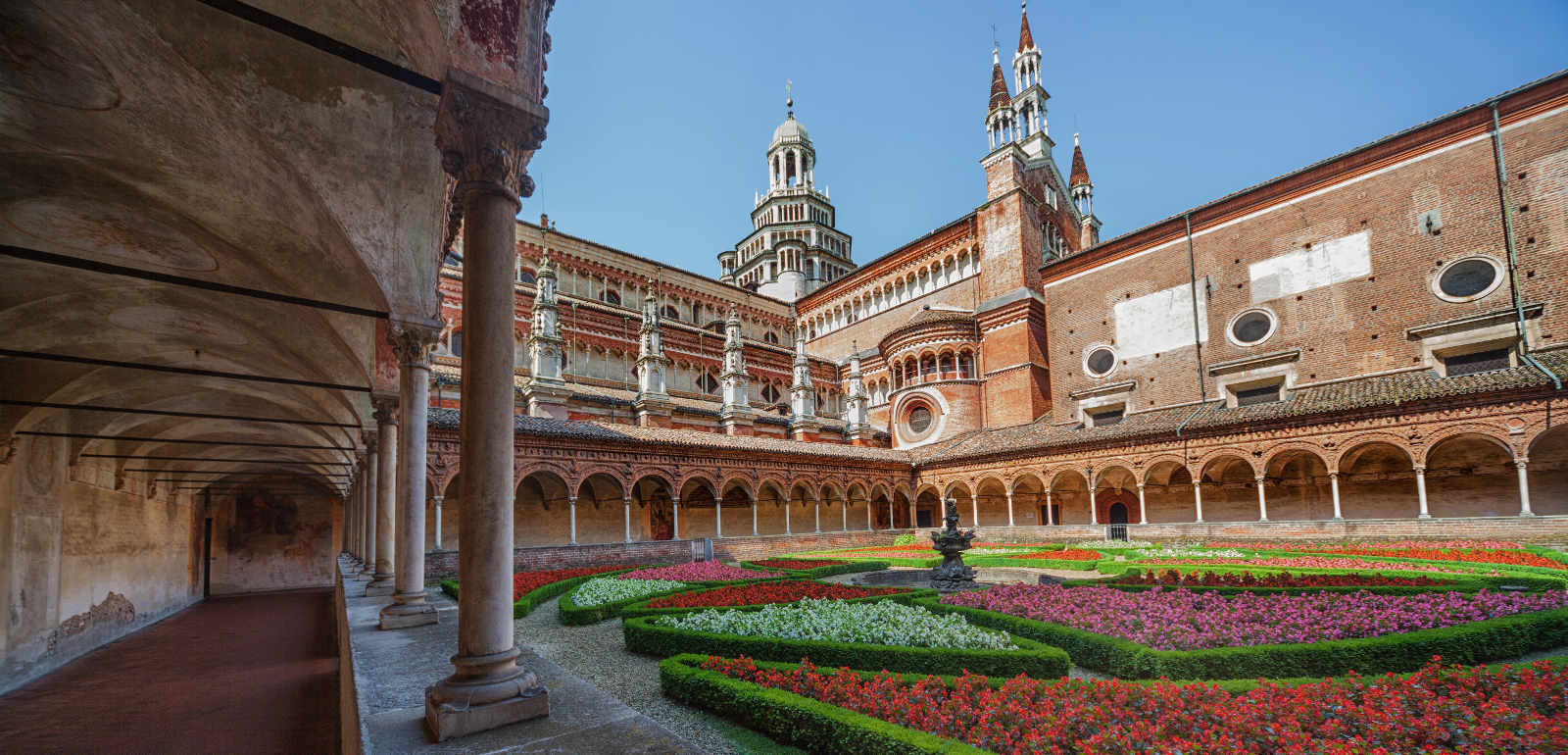
The Certosa di Pavia, or Carthusian monastery, founded in 1396 and located eight kilometres (5.0 miles) north of the city.
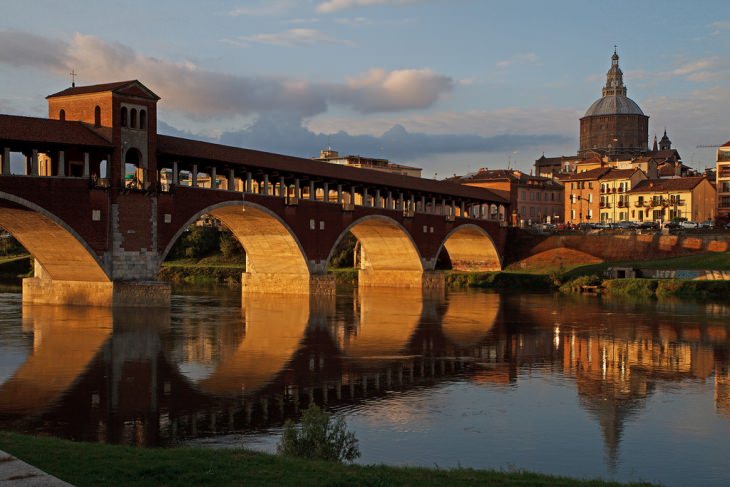
View of covered bridge and the Cathedral of Pavia (Duomo di Pavia).
